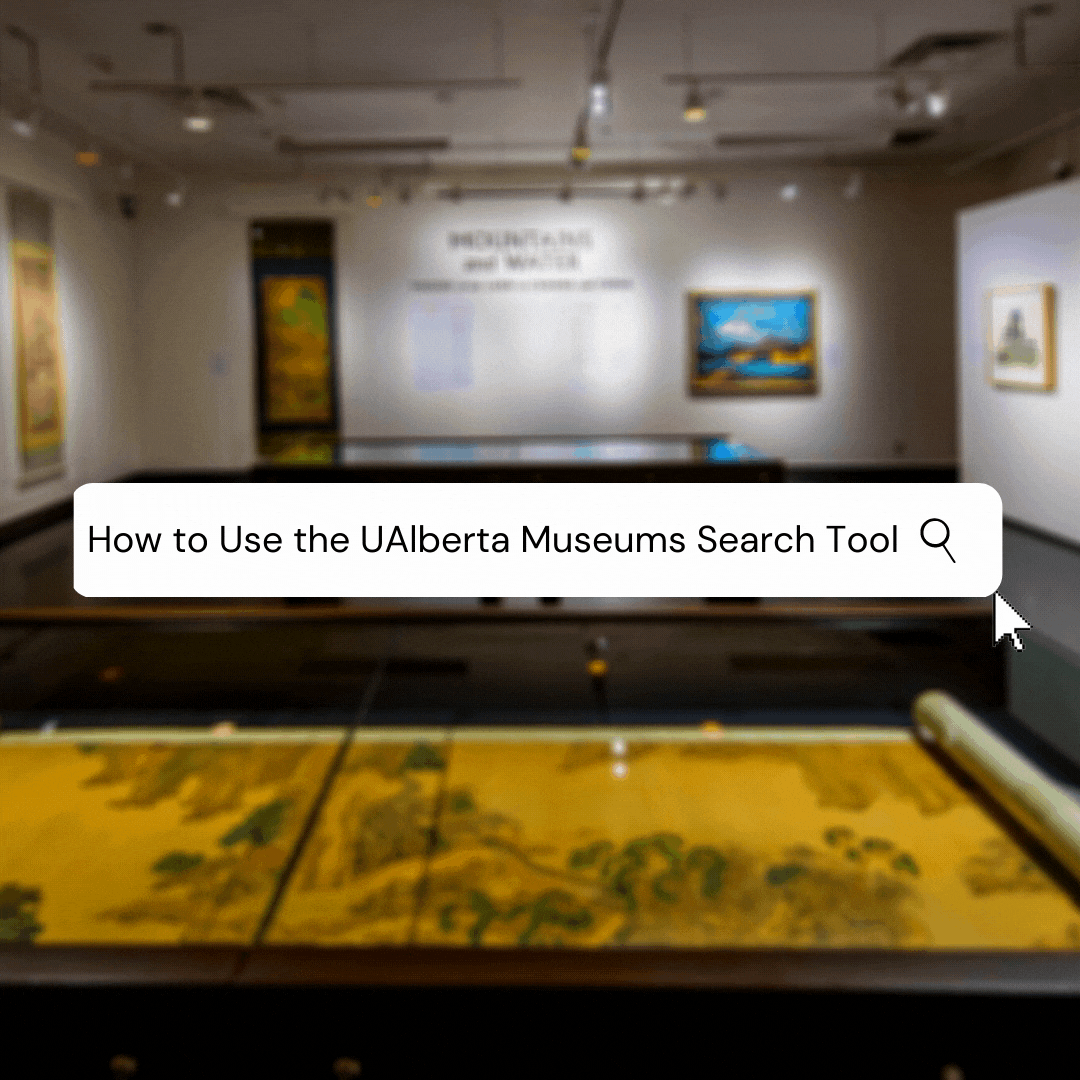
Not too long ago (back in late September), the university released a new online database for the UAlberta Museums! This database is super cool (and EXTREMELY HANDY FOR STUDENTS LIKE ME WHO NEED ACCESS TO THE MUSEUMS FOR RESEARCH BUT CAN’T BECAUSE THEY’RE CLOSED DUE TO THE PANDEMIC). If you’re interested, you can check it out here!
This searchable database includes artifacts and art from various collections including the Paleobotanical Collection, the Canadian Centre for Ethnomusicology, the Meteorite Collection, the Mactaggart Collection, and more! Now, not everything is in this new database. Some of the things I went looking for that were searchable with the museum before are not in this system. It says “[collections] will continue to be added in the upcoming months.” So hopefully they are uploaded into the system soon!
This system is really cool because once you search something (I searched “Egypt” for this example) you have the opportunity to refine your search by collection!
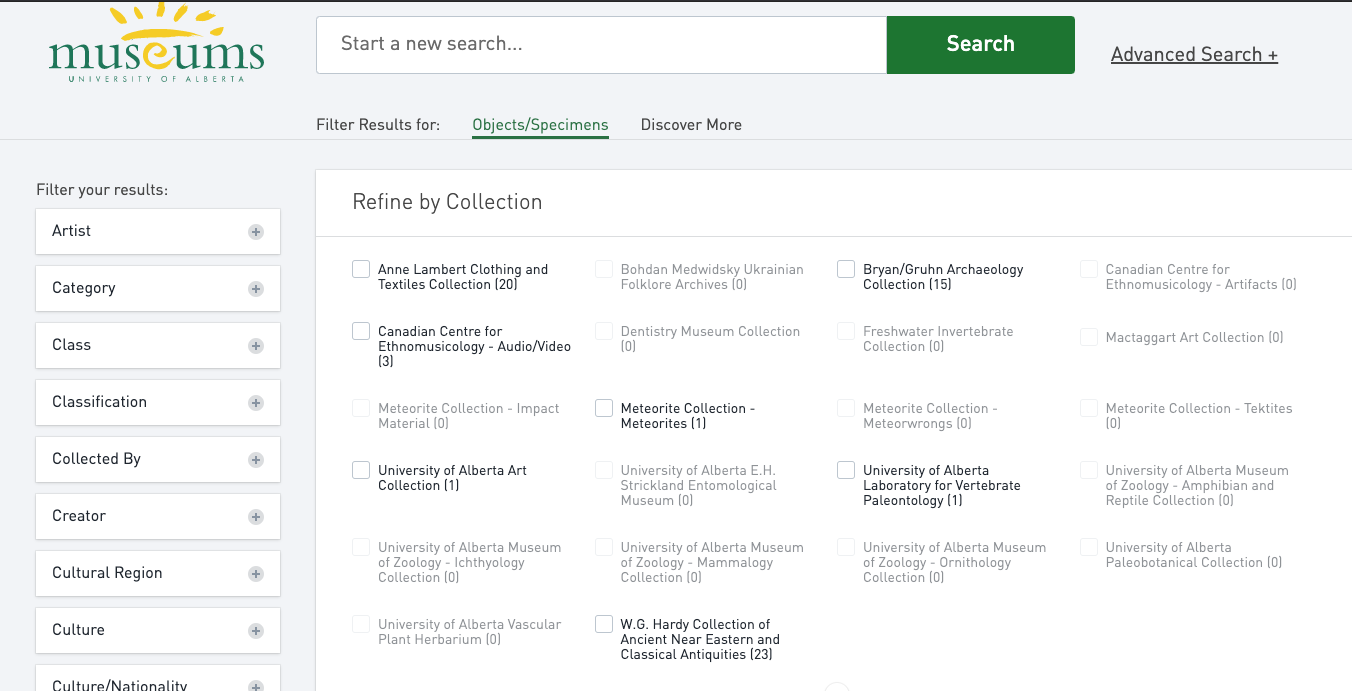
As someone who volunteers for the W. G. Hardy Collection of Ancient, Near Eastern and Classical Antiquities, I clicked on that to see what it would give me! Once I did that, it gave me all of the artifacts that belong to that museum that are from Egypt! Here is the Coptic Textile Fragment we have hanging in the museum!
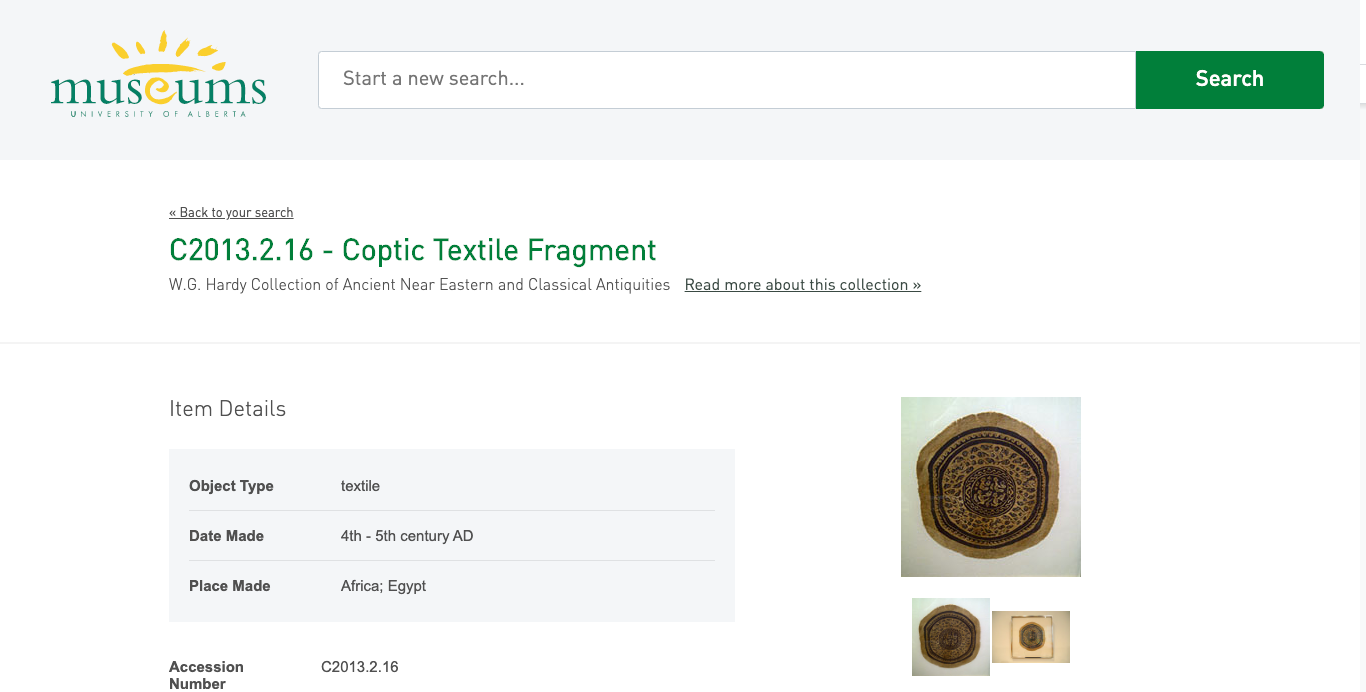
And my own photo of it:
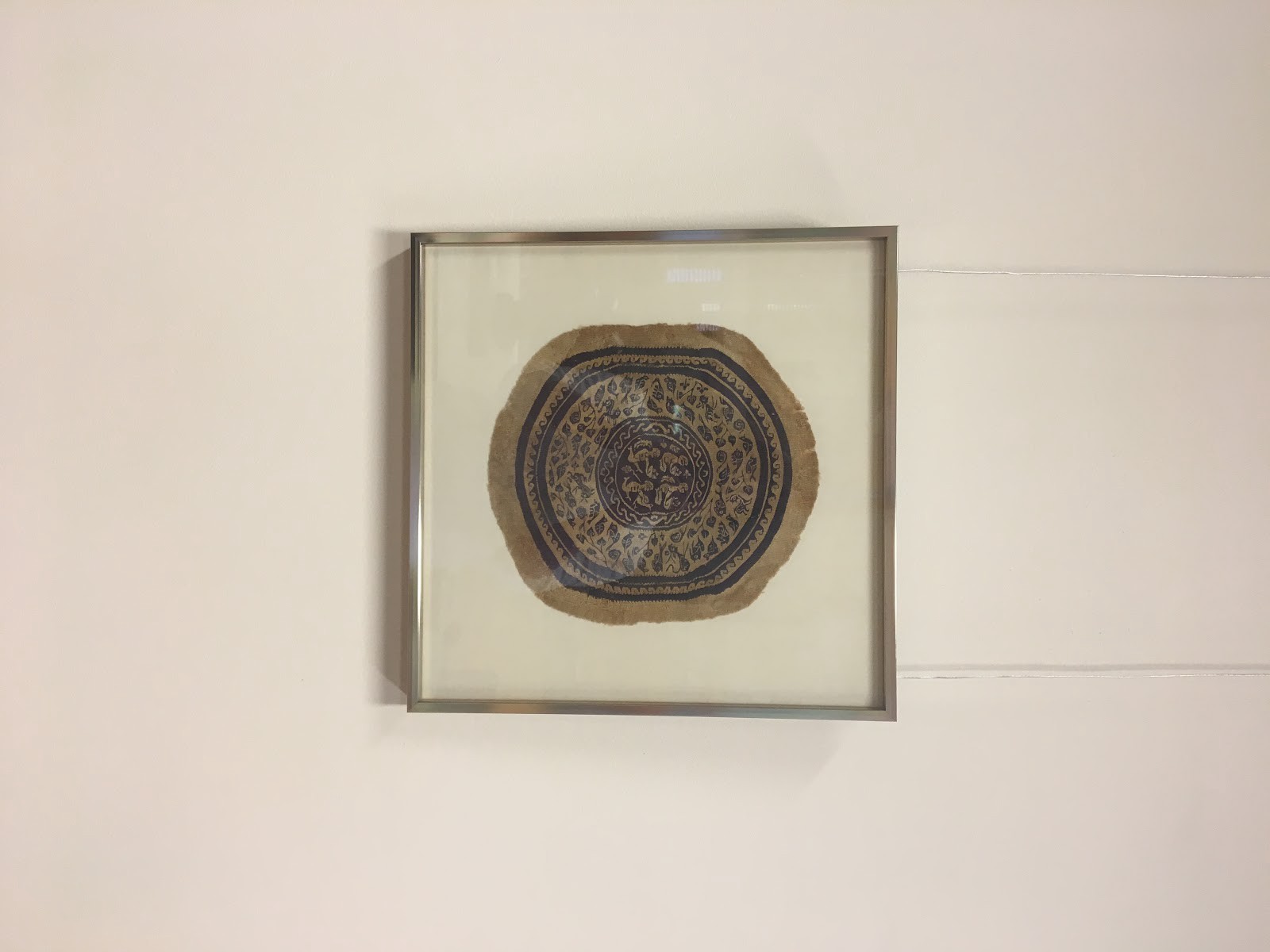
As you can see, their photos are really good!
If you click on it, It gives you information like the date it was made, location, category (this was “artifact remnants”), the maker (“unknown” in this case) and more! This is SUPER handy for students who are doing research on anything artifact-related especially if they’re not physically on campus (like right now!). Not only does this system show artifacts that are on display, but also artifacts they have in their collections (the university had LOTS of artifacts in collections)! It also details MANY different things, from clothes, to pots, to rocks and gemstones, even pottery sherds. There are so many artifacts in this database, it’s incredible!
Once you click on an artifact, you also have the option to learn more about the collection they are a part of!
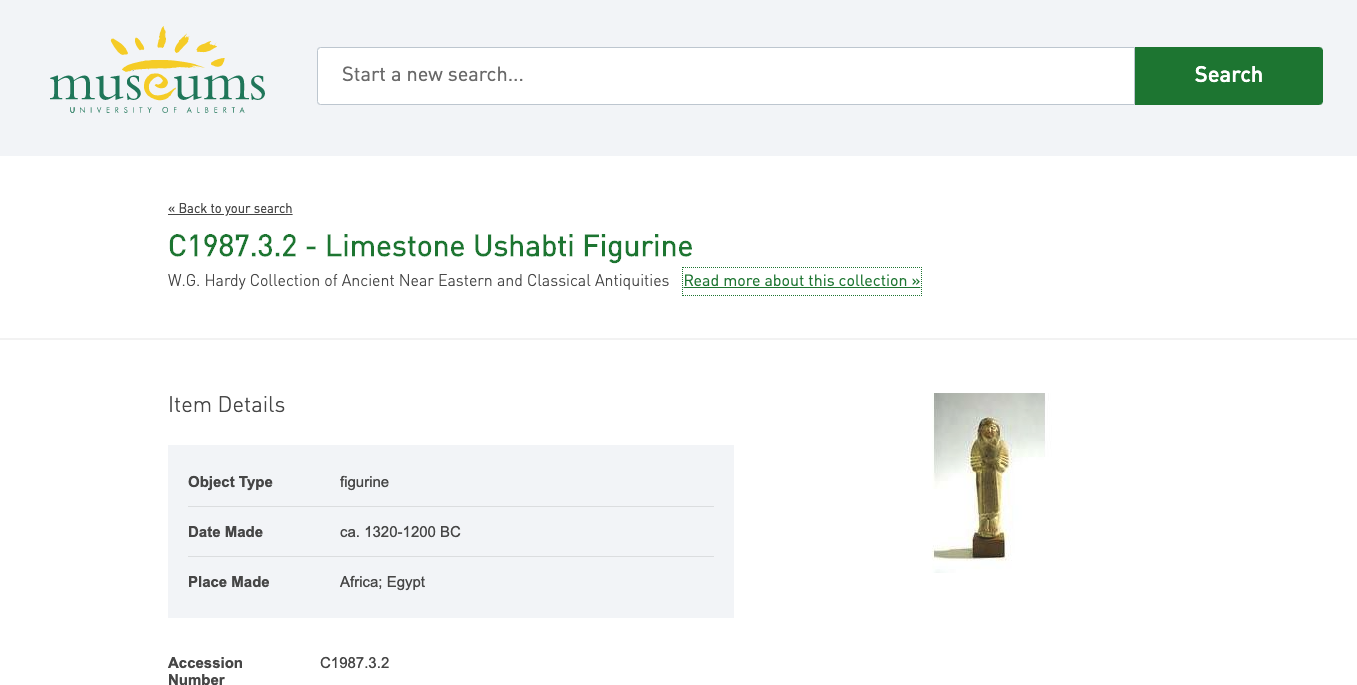
This link brought me to a webpage about the W. G. Hardy Collection of Ancient, Near Eastern and Classical Antiquities including pictures of the museum and the contact information for the curator of the collection! Under normal circumstances this would also have the times of day and days of the week during which the museum is open to the public, but currently all of the museums on campus are closed (but once they reopen, do go check them out!)
It’s not a perfect system, and you do have to be very specific when searching. For example, I looked up “King Arthur” because that’s what my research focuses on and I got HUNDREDS of hits. However, nothing was really related to King Arthur himself, or if there was something related to King Arthur, it was buried under all the other hits and I didn’t see it as all of the hits were things that had “king” in them. There were a bunch of cuneiform tablets that showed up because they were about the king of Uruk. Not quite the king I was looking for…. However, if you do get hundreds of hits like I did, there are a TON of filters you can use to refine your search even more! You can refine by artist, category, collection method, culture/nationality, date of fall/find, formation, gender and age, location and more.
As a grad student, this database is very useful! Having the opportunity to handle artifacts has been a wonderful part of my grad experience because it really connects me to what I’m learning. Since the museums are closed due to COVID-19, that aspect of my research and learning has been halted. I’m so excited to be able to use this database to bring me a bit closer to my research and cultures I’m learning about and have access to objects and artifacts that aren’t necessarily on display in the museum I volunteer in.
I did find it a bit frustrating that some artifacts were missing from the database that were available for search in the old system. Some of those artifacts were super interesting to me and being able to search them in the new system would have been extremely handy. However, overall I think this is an excellent system, a wonderful project by the UAlberta Museums, and an excellent resource for students! As a student who works with artifacts and very old, ancient books, or even as someone just curious about ancient things like fossils or clothing, this is an incredible system and I highly recommend everyone check it out!